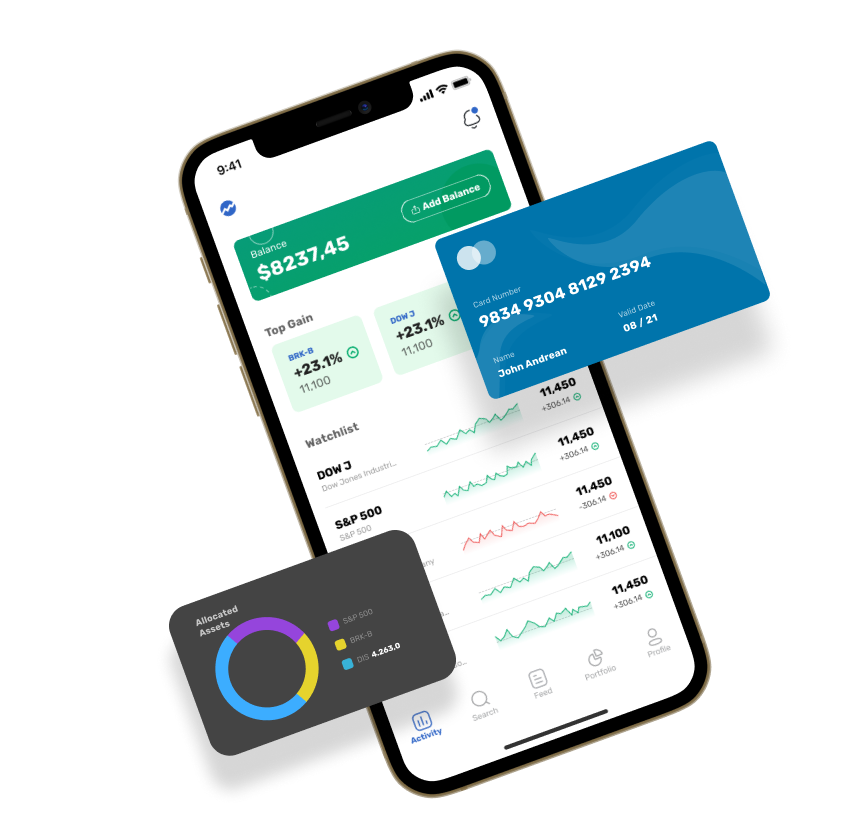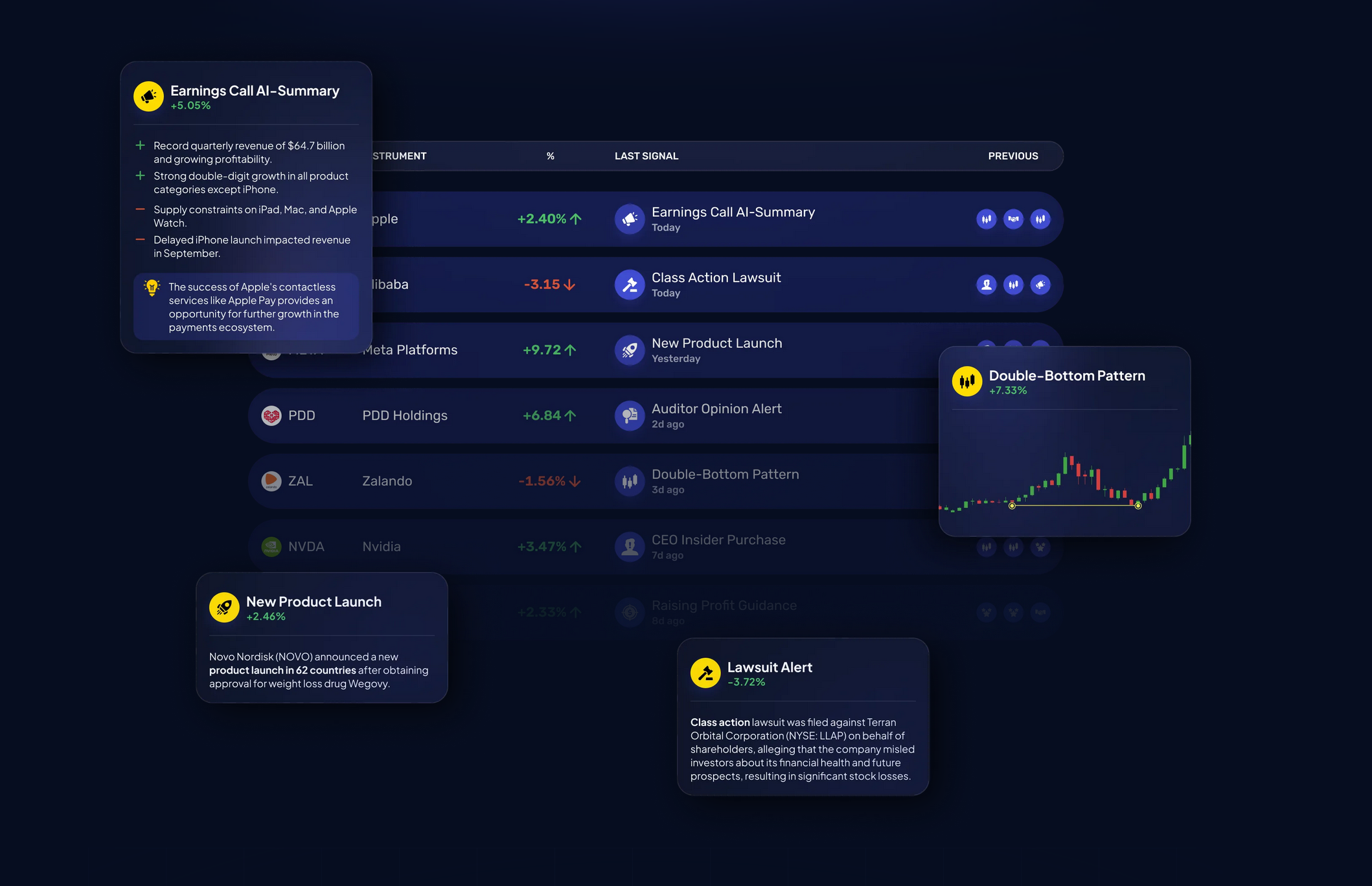20 Best Info For Deciding On AI Stock Trading Platform Websites
20 Best Info For Deciding On AI Stock Trading Platform Websites
Blog Article
Top 10 Ways To Assess The Market Coverage Offered By Ai-Based Stock Prediction/Analysis Platforms
Market coverage is an essential factor when evaluating AI platform for predicting or analyzing stocks which determines the range and depth of markets and assets you are able to access. Platforms that have a wide market coverage permit you to diversify your portfolio and explore opportunities across the globe and also adapt to different trading strategies. Here are 10 tips on how to evaluate the market coverage of platforms.
1. Evaluate Supported Asset Classes
Stocks: Ensure that the platform has stocks from all major stock exchanges, such as NYSE, NASDAQ and LSE.
ETFs: Make sure that the platform offers an array of ETFs that provide diversified exposure across topics, sectors and countries.
Options and Futures: Determine whether the platform allows derivatives like options futures, options and other products with leverage.
The commodities and forex. Check to see whether there are any forex pairs available, as well as precious metals, energy-related commodities and other agricultural commodities.
Cryptocurrencies Make sure the platform supports popular cryptocurrencies such as Bitcoin, Ethereum, and altcoins.
2. Check the Coverage Area
Global markets: The platform should include major global markets like North America and Europe, Asia-Pacific and emerging markets.
Regional focus Ensure that the platform specializes on certain markets or regions that coincide with your trading interests.
Local exchanges: Make sure you know whether the platform is compatible with regional or local exchanges that are relevant to your location or strategy.
3. Assessment Real-time as opposed to. Delayed Data
Real-time data is essential to make quick decisions particularly when trading is in the active phase.
Delayed data: Find out whether you can obtain delayed data for free, or at a reduced cost. This may be enough for investors who are looking to invest long-term.
Data latency. Verify whether the platform is able to minimize the delay for feeds of information that are real-time particularly in the case of high-frequency trading.
4. Evaluate Historical Data Availability
Historical data depth: Ensure the platform offers vast historical data (e.g. 10, 10+ years) for backtesting and analysis.
The granularity of the data: Determine if the historical data contains intraday, daily, weekly, and monthly granularity.
Corporate actions: Check to see if data is recorded in the past. Dividends as well as stock splits and any other corporate actions need to be included.
5. Examine the for market depth and order information
For better price discovery, ensure that the platform is equipped with Level 2 information.
Spreads for bids: See if the platform shows real-time bid-ask spreads to ensure precise prices.
Volume data: Ensure that the platform provides detailed information regarding volume that can be used to analyse market activity and liquidity.
6. Assess the Coverage of Indices Sectors
Major indices: Ensure that your platform can support major indices like the S&P 500 (e.g. NASDAQ 100 or FTSE 100), for index-based benchmarking.
Sector-specific data : Find out if your platform is able to provide data specific to particular sectors (e.g. healthcare, technology and energy) to allow specific analyses.
Customized indices. Check if you can make or monitor custom indices based on your own criteria.
7. Evaluation of integration with News and Sentiment data
News feeds: Make sure that the platform has real-time feeds of news and information from reliable sources, like Bloomberg and Reuters in the case of market-moving events.
Check the tool's sentiment analysis based on data from social media, news or other sources.
Event-driven strategies (e.g. economic announcements, earnings announcements): Check if your platform allows trading strategies that are based on news events.
8. Make sure you are aware of Multi-Market Trading Capabilities
Cross-market Trading: Verify that the platform allows traders to trade across a variety of markets and asset classes from an integrated interface.
Currency conversion: Verify if the platform allows multi-currency accounts and automated currency conversion to trade internationally.
Support for time zones: Verify that your platform supports the ability to trade across multiple time zones.
9. Review the coverage of different data sources
Alternative data: For unique insights, confirm if your platform uses alternative data (e.g. satellite imagery, web traffic or credit card transactions).
ESG data - Make sure that the platform provides environmental, governance, and social information (ESG). This is essential for a the socially conscious investment.
Macroeconomic data: Make sure the platform provides macroeconomic indicators (e.g. GDP, inflation, interest rates) for fundamental analysis.
10. Review Customer Feedback and Market Reputation
Reviews from users: Check for user reviews to gain a better understanding of the platform.
Reputation in the industry: Find out whether the platform has been praised for its market coverage by experts in the industry or awards.
Testimonials and case studies: These will highlight the platform's performance in certain market segments or asset classes.
Bonus Tips
Trial period - Use the demo or trial for free to test out the market coverage and data coverage.
API access - Verify whether the API can be used to gain access to data from the market by programming.
Support for customers: Ensure that the platform offers support for market-related queries or data issues.
With these suggestions, it is possible to accurately assess the coverage of AI software for stock prediction and analyzing trading platforms. Then, you can select the trading platform that gives you the market and the data you require for successful trades. Market coverage that is comprehensive allows you to diversify your portfolio, explore new opportunities and be able to adapt to market conditions that change. View the top ai stock trading recommendations for more tips including ai trade, trading with ai, using ai to trade stocks, chart ai trading assistant, trading with ai, chatgpt copyright, ai stock picker, ai chart analysis, best ai for trading, ai stocks and more.
Top 10 Things To Consider When Evaluating Ai Trading Platforms For Their Flexibility And Trialability
Prior to signing up for a long-term deal It is important to try the AI-powered stock prediction and trading platform to see whether they meet your requirements. Here are 10 best strategies for evaluating these features.
1. Take advantage of a free trial
Tips: Find out if the platform offers a free trial period to test its capabilities and performance.
Free trial: This allows you to test the platform with no financial risk.
2. Limitations on the duration and limitations of Trials
TIP: Check the duration of the trial, as well as any limitations (e.g. limited features, limited data access).
Why: Understanding the limitations of a trial can aid in determining whether it's an exhaustive assessment.
3. No-Credit-Card Trials
Look for trial trials at no cost that don't require your credit card's number in advance.
Why: This will reduce the possibility of charges that are not planned and will make it easier for you to cancel your subscription.
4. Flexible Subscription Plans
TIP: Check whether the platform has flexible subscription plans (e.g., monthly, quarterly, or annual) with clear pricing levels.
Flexible Plans enable you to choose the level of commitment that best suits your requirements.
5. Customizable Features
TIP: Make sure the platform allows customization of options, like alerts, risk levels or trading strategies.
Customization lets you tailor the platform to meet your trading goals and preferences.
6. Simple cancellation
Tip: Consider how simple it is to cancel, degrade or upgrade your subscription.
Why: An easy cancellation process can ensure you don't get stuck on a plan you don't like.
7. Money-Back Guarantee
TIP: Look for platforms that provide a money back guarantee within a specified time.
The reason: It will give you an additional security net in the event that the platform fail to meet your expectations.
8. Trial Users Have Full Access to Features
Tips: Ensure that the trial gives you access to all the features, not just a limited version.
You can make a more informed decision by testing the whole functionality.
9. Support for customers during trial
Tips: Make sure you contact the Customer Support during the test time.
Why is it important to have reliable support so you can resolve issues and make the most of your trial.
10. Feedback Mechanism Post-Trial Mechanism
Find out if the platform asks for feedback from its users following the test to improve the quality of its service.
What's the reason: A platform that has a an extremely high levels of user satisfaction is more likely to evolve.
Bonus Tip Scalability Options
The platform should be able to grow with your growing trading activity by providing you with higher-level plans and/or additional features.
If you take the time to consider these options for trial and flexibility, you'll be able to make an informed choice on whether you think an AI stock prediction platform is the best option for your needs. Have a look at the top rated stock predictor for more examples including best ai stock prediction, ai share trading, ai copyright signals, ai stock predictions, how to use ai for stock trading, best ai stock prediction, best ai trading platform, ai tools for trading, how to use ai for copyright trading, best ai trading platform and more.